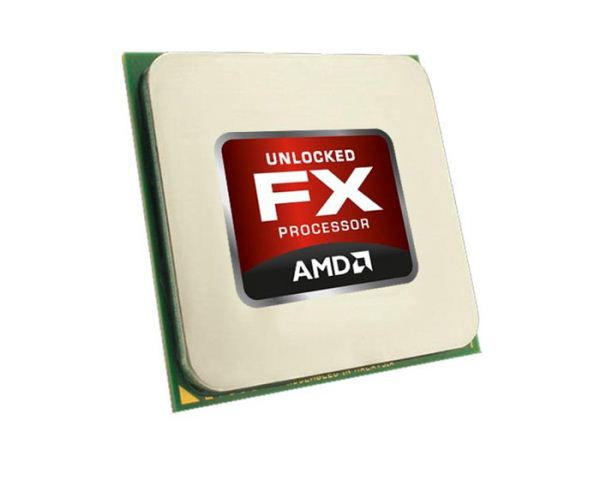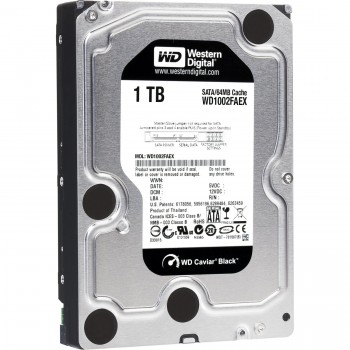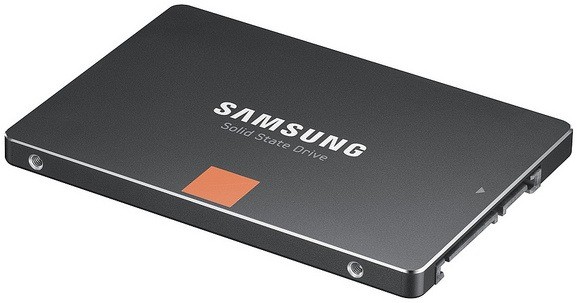Holiday 2012 Workstation Buyer's Guide
by Zach Throckmorton on December 10, 2012 3:20 AM EST- Posted in
- Guides
- AMD
- Intel
- Ivy Bridge
- Piledriver
- Holiday 2012
AMD workstation
 Anand thoroughly reviewed AMD's latest Piledriver-based "Vishera" CPUs upon their launch a few months ago. Priced at $130, the FX-6300 hex-core model costs about as much as Intel's Ivy Bridge-based Core i3-3220. In terms of real-world workstation application performance (the details of which are presented in Anand's review), the FX-6300 bests the i3-3220 in a variety of tasks: Monte Carlo simulations in Microsoft Excel, multi-threaded video editing, software compilation in Visual Studio, and multi-threaded integer workloads such as those used in file compression/decompression. Compared to the i3-3220, the FX-6300's major weakness is its higher power consumption—under load the AMD chip pulls almost twice as much power as Intel's Ivy Bridge-based juice sipper (though in terms of absolute power, we're talking about less than 100W more). That said, Depending on what you're doing with your work computer, the FX-6300 is a relatively inexpensive option worthy of your consideration. You can see a detailed comparison of the FX-6300 to the i3-3220 in CPU Bench.
Anand thoroughly reviewed AMD's latest Piledriver-based "Vishera" CPUs upon their launch a few months ago. Priced at $130, the FX-6300 hex-core model costs about as much as Intel's Ivy Bridge-based Core i3-3220. In terms of real-world workstation application performance (the details of which are presented in Anand's review), the FX-6300 bests the i3-3220 in a variety of tasks: Monte Carlo simulations in Microsoft Excel, multi-threaded video editing, software compilation in Visual Studio, and multi-threaded integer workloads such as those used in file compression/decompression. Compared to the i3-3220, the FX-6300's major weakness is its higher power consumption—under load the AMD chip pulls almost twice as much power as Intel's Ivy Bridge-based juice sipper (though in terms of absolute power, we're talking about less than 100W more). That said, Depending on what you're doing with your work computer, the FX-6300 is a relatively inexpensive option worthy of your consideration. You can see a detailed comparison of the FX-6300 to the i3-3220 in CPU Bench.
ASRock's 970 Extreme3 AM3+ ATX motherboard is a straightforward, fully-featured product that, in my experience, is quite reliable. It offers plenty of expandability for peripherals with its two PCIe x1 and two PCI lanes, and users interested in GPGPU computing will find two PCIe X16 lanes (though when both are populated, one runs at x16 and the other at x4). We're pairing this board with a 16GB kit of basic DDR3-1600 from Corsair, consisting of two 8GB sticks. This leaves two slots open for an easy, drop-in upgrade to 32GB if you deem that a wise use of your money.
 Regarding storage, two of the most reliable products on the market get the nod—Intel's 520 Series 120GB SSD and Western Digital's 1TB Black HDD. Both carry five year warranties from their manufacturers, whereas most SSDs and HDDs carry two- or three-year warranties. The combination of a fast OS and application SSD with a fast, high capacity HDD is a good general solution for most workflows; you might be better off with a single large SSD, or your work might be more cost effectively completed with a tiny SSD (like Intel's 520 Series 60GB) and multiple larger, slower hard drives (like Western Digital's Green 2TB). And of course, don't forget external backup storage!
Regarding storage, two of the most reliable products on the market get the nod—Intel's 520 Series 120GB SSD and Western Digital's 1TB Black HDD. Both carry five year warranties from their manufacturers, whereas most SSDs and HDDs carry two- or three-year warranties. The combination of a fast OS and application SSD with a fast, high capacity HDD is a good general solution for most workflows; you might be better off with a single large SSD, or your work might be more cost effectively completed with a tiny SSD (like Intel's 520 Series 60GB) and multiple larger, slower hard drives (like Western Digital's Green 2TB). And of course, don't forget external backup storage!
BitFenix's Ghost gets our nomination to house everything. Dustin reviewed this sleek-looking case recently, and like him, I've enjoyed building systems in this case. Its thermals are more than up to the task of cooling a higher TDP CPU like the FX-6300. Keep in mind that all of our case suggestions in this buyer's guide are interchangeable, so if you happen to like a case detailed in another build, you can certainly put these parts in that case. Powering everything, we have Antec's Earthwatts 380W. Though Antec has switched OEMs over the course of this product's history, I have now installed this model into over 100 systems in the last few years, and one has failed. In other words, it's about as reliable as a low-cost, mainstream PSU comes.
Finally, this build includes a copy of Windows 7 Professional 64-bit. You can get an overview of the differences between Windows versions at Microsoft and Wikipedia. Some of the more relevant and important differences between Professional and Home Premium are the former's support for more than 16GB of RAM, Windows XP mode, domain join, and integrated backup and restore features.
| Component | Product | Price | Rebate |
| Case | BitFenix Ghost | $100 | |
| Power supply | Antec Earthwatts 380W | $45 | |
| CPU | AMD FX-6300 | $140 | |
| Motherboard | ASRock 970 Extreme3 AM3+ ATX | $85 | |
| RAM | 16GB Corsair Value Select DDR3-1600 | $60 | |
| SSD | Intel 520 Series 120GB | $130 | |
| Hard drive | Western Digital Black 1TB | $110 | |
| Graphics card | Sapphire Radeon HD 5450 1GB | $35 | -$15 |
| Optical drive | Lite-On iHAS124-04 | $18 | |
| Operating system | Windows 7 Professional 64-bit | $137 | |
| Total: | $860 | $845 |
Intel workstation
I consider the next tier up from the AMD FX-6300/Intel Core i3-3220, in terms of workstation productivity, to be the AMD FX-8350/Intel Core i5-3570 tranche. At this price, however, the pendulum swings closer to Intel's CPU—largely because the AMD FX-8350 uses about 100W more under load to sometimes accomplish less actual computational work. That said, be sure to read how the FX-8350 compares to the Core i5-3570; if the AMD chip will be better for your workloads (despite its electrical gluttony), you can use it instead of the FX-6300 in the build above. If your workloads benefit from Hyper-Threading, you should consider stepping up from the Core i5-3570 to the Core i7-3770. You can see how the two Intel CPUs compare once again in CPU Bench.
 Like the AMD FX-6300 workstation detailed above, we're including 16GB for this workstation. The ASUS P8B75-V is a reliable B75 chipset-based board with plenty of room for expansion (such as drop-in expansion to 32GB of RAM). Both PCIe lanes are able to function at x16, though one is a PCIe 2.0 slot and the other is a PCIe 3.0 slot (not that this distinction is particularly important at this point in time). Perhaps the only drawback to the B75 chipset is that it has only one SATA III port, though if you have only one SATA III SSD, this is not an issue.
Like the AMD FX-6300 workstation detailed above, we're including 16GB for this workstation. The ASUS P8B75-V is a reliable B75 chipset-based board with plenty of room for expansion (such as drop-in expansion to 32GB of RAM). Both PCIe lanes are able to function at x16, though one is a PCIe 2.0 slot and the other is a PCIe 3.0 slot (not that this distinction is particularly important at this point in time). Perhaps the only drawback to the B75 chipset is that it has only one SATA III port, though if you have only one SATA III SSD, this is not an issue.
For storage, we're recommending the Samsung 840 Pro. If you follow Anand's SSD reviews, we noted the pre-production firmware resulted in dead drives, but that the production firmware appears to have corrected this issue. Given the track record of the Samsung 830, I have no reservations recommending the 840 Pro for production systems. We're also stepping up the storage capacity with a 2TB rather than 1TB Western Digital Black platter-based drive for this system; though again, only you know how much storage you'll need for your workloads.
I've recommended the Fractal Design Define R4 before, and continue to use it extensively for custom builds. Its combination of good thermals, excellent acoustics, and slick looks make for a very compelling $100 case. Finally, the Seasonic S12II series has an outstanding reputation for supplying clean, reliable power, and the 430W version provides enough juice for the build detailed below as well as any single GPU graphics card on the market, if you're interested in GPGPU computing.
| Component | Product | Price |
| Case | Fractal Design Define R4 | $110 |
| Power supply | Seasonic S12II 430B | $60 |
| CPU | Intel Core i5-3570 | $215 |
| CPU alternate | Intel Core i7-3770 | $300 |
| Motherboard | ASUS P8B75-V B75 ATX | $90 |
| RAM | 16GB Corsair Value Select DDR3-1600 | $60 |
| SSD | Samsung 840 Pro 128GB | $150 |
| Hard drive | Western Digital Black 2TB | $180 |
| Optical drive | Lite-On iHAS124-04 | $18 |
| Operating system | Windows 7 Professional 64-bit | $137 |
| Total (with i5-3570): | $1,020 | |
| Total (with i7-3770): | $1,105 |
On the next page, we step up to a Sandy Bridge E-based workstation.










49 Comments
View All Comments
Rick83 - Monday, December 10, 2012 - link
With 3 Teslas, you definitely want a C606 based chipset, otherwise you'll run out of PCIe fast. Haven't looked intensely at that market yet, because it's outside my needs/budget.Next9 - Tuesday, December 11, 2012 - link
What about Supermicro? They have plenty of single socket and dual socket LGA2011 motherboards? Even with onboard audio and USB 3.0. Or there are also C32/G34 alternatives if you prefer Opterons.Ananke - Monday, December 10, 2012 - link
I absolutely agree. Workstation path is Supermicro/Tyan/Intel motherboard with Xeon, ECC RAM, etc. and NVidia GPGPU. If you use mostly Maya, than you can cheap with some consumer Radeon. Eventually, redundant PSU. Such system can go as high as $50k though.Next9 - Tuesday, December 11, 2012 - link
Cheap Radeons are also great in Virtualized environment (Vt-d/IOMMU). Consumer grade GeForce cards have often problems with direct HW passthrough.Penti - Monday, December 10, 2012 - link
Workstation features and text-mode firmware is what you want, not to be reminded about the GUI BIOS's of 486 computers of the past. It wasn't a good idea then and isn't now. Working implementations is all that matters.I guess high-end should be something like a LGA2011 Xeon machine. Of course something like a Supermicro board will have it's own (third party) IPMI and KVM over IP embedded BMC/stack. Or a 4P Opteron Piledriver machine. For high-end enterprise type stuff. (Boxx sells systems with dual processor Opteron or Xeon, I guess dual processor Opteron will give a boost for some, at least with G34 quad-channel and 2/4P on top of that). At least those systems where you have the choice to go 2P or 4P is what you would call actual workstations. Which performs better or fit other uses then a say clocked 3770k any how. Between a six core SB-E and Ivy Bridge quad-core there just won't be a lot of difference to justify the shift. If you want VT-d you could find Z77 boards with support for it if your looking. Just not Asus boards. Provided you choose a CPU that as support for it too, like 3770 (non-k). Probably Q77 vPro/AMT supported boards too if you look for them. If you do any creative multimedia type stuff you probably want a much more powerful graphics card then GF210 btw. In the terms of supporting stuff like Adobe's Mercury Playback Engine, CUDA acceleration or professional CAD or modeling software.
All depends on need. If you need it a good machine will probably be worth it.
Olaf van der Spek - Monday, December 10, 2012 - link
What's up with the Radeon 5450 suggestion? With only 64 bit DDR3 it's seriously low on memory bandwidth, which might even cause trouble on the desktop.DanNeely - Monday, December 10, 2012 - link
I've ran a 2560x1600 and 1200x1600 monitor simultaneously on significantly slower cards without trouble before. You're not going to be able to do anything GPU heavy on them but the desktop's requirements are so low virtually anything can handle them.slatanek - Monday, December 10, 2012 - link
just wanted to add, for all adobe cs6 users (premiere pro especially) go with nvidia for the graphics. amd's gpu's get limited support and it's osx only (mercury engine mostly).for the lack of ecc, v-td etc. I understand that Zack stated/advised that if your work is critical (thats where you'd use ecc after all) you'd be better off with pre-build systems that come with full service. thats why, I assume, no mention of the pro features.
ggathagan - Tuesday, December 11, 2012 - link
Are you sure about that?In CS5, the Mercury engine only supported CUDA.
As I understand it, however, Mercury has been modified in CS6, dropping CUDA support in favor of OpenCL and OpenGL
http://helpx.adobe.com/photoshop/kb/photoshop-cs6-...
"MGE is new to Photoshop CS6 and uses both the OpenGL and OpenCL frameworks. It does not use the proprietary "CUDA framework from nVidia."
TeXWiller - Monday, December 10, 2012 - link
That is an inappropriate selection for a workstation. Try the W-series instead. And since we are talking about entry-level workstations, the E3 Xeons and AMD based ECC-supporting consumer boards should have been included, like the other commenters have pointed out. The A300s don't support ECC but would have been an interesting point of comparison.